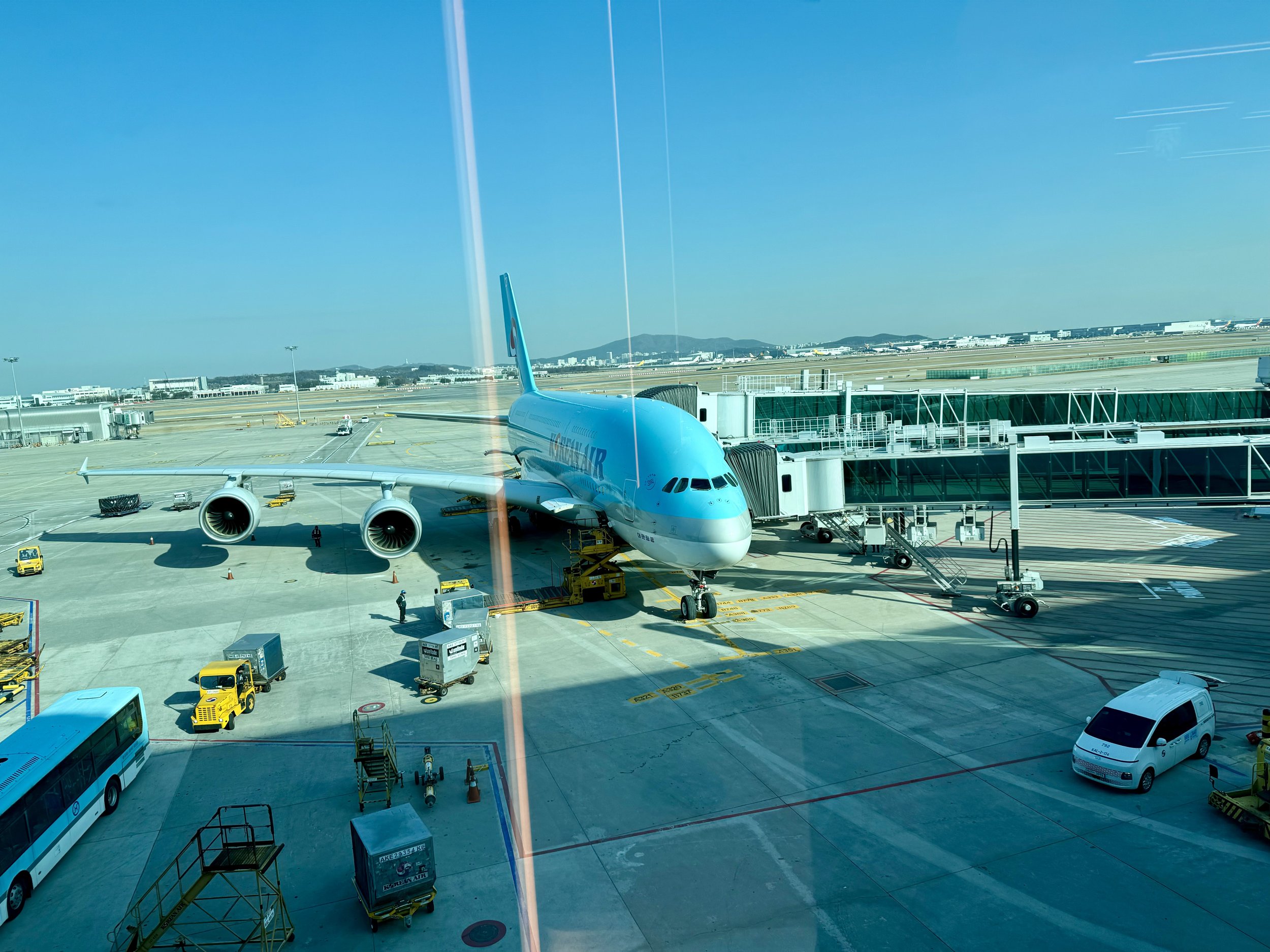When Home Feels Foreign: Mindfulness and Reverse Culture Shock
Coming home isn’t always what you expect. There’s no parade. No neon sign flashing, “Welcome back.” Just a quiet, offbeat hum in the background, like the volume of life got nudged slightly higher or lower while you were away.
The first time it hit me, I was standing in a grocery store. My hometown grocery store. But it felt unfamiliar. The snack aisle was twice as wide as I remembered. The overhead music was aggressive. The colors on the cereal boxes looked like they had been digitally enhanced. And the prices, they seemed like something out of a different economy altogether.
Then came the cultural references. A joke on a radio show. A celebrity on a billboard. A slang word tossed casually in conversation. It wasn’t that I didn’t understand, it was that I didn’t feel tuned into the same frequency. I wasn’t following the plot anymore.
That’s reverse culture shock. It shows up with friction; tiny, silent mismatches between expectation and experience. And if you’ve spent enough time abroad, especially in places where your habits, language, and worldview had to stretch and reshape, the friction becomes familiar.
This kind of phenomenon isn’t rooted in homesickness or fatigue. It’s something more interesting: a disconnection between the person you were when you left and the person you’ve become. It’s like returning to a stage where you used to know all the lines… but the script’s been rewritten while you were gone and so have you.
A Disruption of the Autopilot
In psychological and intercultural terms, reverse culture shock represents more than surprise or surface-level discomfort. It’s a form of cognitive and emotional dissonance. The environment may appear familiar, but it fails to align with the deeply embedded expectations formed during time spent abroad. What emerges is a conflict between memory and present experience: the mind anticipates one reality based on past neural patterns, yet receives something altered, even alien. This is particularly evident in returnees who have not simply traveled, but lived immersed in a different cultural system for a significant period.
Scholars John and Jeanne Gullahorn (1963) conceptualized this re-adjustment experience in their W-Curve Model, which mirrors the U-shaped model of initial culture shock, but adds a second dip, symbolizing the emotional turbulence that can accompany returning "home." This dip occurs because individuals are often unprepared for the fact that reintegration can be just as complex as the initial adaptation to a new culture. Unlike the outward-facing curiosity that often accompanies culture shock, reverse culture shock can create an inward-facing tension, rooted in the realization that the self has changed while the original context may not have.
From a neuroscientific perspective, the brain thrives on routine because it conserves cognitive energy. This is the basis for what Daniel Kahneman (2011) refers to as System 1 thinking—fast, automatic, and habitual. In familiar environments, the brain defaults to these efficient pathways, allowing us to operate on “autopilot.” But when the environment doesn’t match the stored template, System 2, slower, more deliberate, and more cognitively demanding, kicks in. This creates a sense of mental friction, even fatigue, as we’re required to re-process what once felt automatic.
This is where mindfulness becomes essential. Jon Kabat-Zinn’s (1994) work on mindfulness describes it as “paying attention, on purpose, in the present moment, and nonjudgmentally.” When practiced consistently, mindfulness trains the brain to observe without rushing to evaluate, reframe, or escape. It provides a buffer between stimulus and response; a space where meaning can be re-integrated slowly and intentionally.
In the context of reverse culture shock, mindfulness can function as an adaptive tool for re-entry. It helps individuals sit with ambiguity and stay curious even when the terrain feels emotionally off-kilter. Instead of reacting with frustration or disengagement (common responses during re-entry) mindfulness cultivates patience and metacognitive awareness: the ability to notice what we are noticing.
Put differently, reverse culture shock is a kind of forced mindfulness training, one where the once-familiar becomes strange enough to jolt us back into awareness. It demands that we wake up to the routines we had forgotten we were even following, to the social codes we once obeyed without question, and to the subtle ways we ourselves have changed.
And that’s where presence begins. When autopilot is disrupted, attention is reclaimed.
Home used to be autopilot. You knew which drawer the scissors were in. You could find the light switches in the dark. You didn’t have to think twice about tipping culture, how to order coffee, or which side of the street to drive on. Then you return and the muscle memory you relied on… just doesn’t fire the same way.
Psychologists have a name for this: the ironically familiar concept of cognitive dissonance which is the mental friction between the way we expect something to be and how it actually is. As mentioned before, the W-curve model of cultural adjustment lays it out clearly: re-entry can be just as jarring as departure. But the twist is in the tone. The shock of arriving in a foreign country often carries a sense of adventure. The re-entry? It tends to catch us off-guard. And that’s what makes it powerful.
Mindfulness invites us into those moments with soft eyes. It doesn’t rush us toward comfort. It doesn’t insist on understanding. It simply asks us to notice. Reverse culture shock becomes a quiet invitation to be fully awake again. You walk into a 7-Eleven, and the options feel endless. You overhear a conversation and realize how fast English sounds. You feel your footing shift slightly in a place you once thought was solid. Uncomfortable, maybe, but honest.
When the map no longer matches the terrain, we stop walking on autopilot. We start looking where we’re going.
Practicing Mindfulness in Familiar Territory
So what do we do when the streets we used to glide through start feeling foreign? We don’t push the feeling away. We lean in with curiosity. Mindfulness is about learning to watch the weather roll in with your eyes open. That moment at a family dinner, when the timing feels a little off? That’s not awkwardness, it’s in simple terms, information. That sense of overwhelm in a big-box grocery store, staring at seventeen kinds of peanut butter? That’s a meditation in disguise.
This is where Jon Kabat-Zinn’s concept of "beginner’s mind" shows up. Beginner’s mind is about seeing the ordinary with a little less armor. When we come home, we start to notice the rhythm of traffic, the tone of news anchors, the feel of the air. All of it becomes data and none of it is mundane.
The mindfulness isn’t in the exotic. If you're sipping phở on a street corner in Da Nang or standing in line at a Dallas Target, the quality of your awareness sets the tone. The textures of life (sound, smell, tone, tension) don’t belong to any one country. They’re everywhere. Reverse culture shock, if nothing else, reminds us that familiarity is not the same thing as understanding.
Coming Home to Yourself
After living abroad, especially in a place that asks you to look at the world sideways, you come back with new instincts. Maybe you pause longer before speaking. Maybe you’ve grown comfortable with ambiguity. Maybe you’ve traded fast answers for slower questions. These could be considered your souvenirs and they’re parts of you now. Coming home, then, is more like a reintroduction. You’re learning how to wear a new skin, one in a place that remembers your last version. That’s growth in real time.
Mindfulness gives you space to hold both truths. You don’t need to reject your new insights, nor do you need to discard the comfort of your roots. You just get to notice the sound of your native language and the rhythms of your hometown. The memories that rise up unprompted, you can meet them all without judgment.
For me, that’s the invitation. Reverse culture shock is part of the journey and not a detour. With eyes open, it becomes less about being lost and more about becoming familiar with the map of yourself all over again.
Author Bio:
Paul Allen Benavides is a university lecturer in business, media & communications, corporate trainer, author, and public speaker specializing in mindful leadership and human-centered development. He is the voice behind Walkabout Elevations, a reflective platform blending storytelling, scholarship, and soul to explore what it means to lead with presence. His broader creative journey lives through Walkabout Rojo, a long-running companion project rooted in global wanderings and personal transformation.


